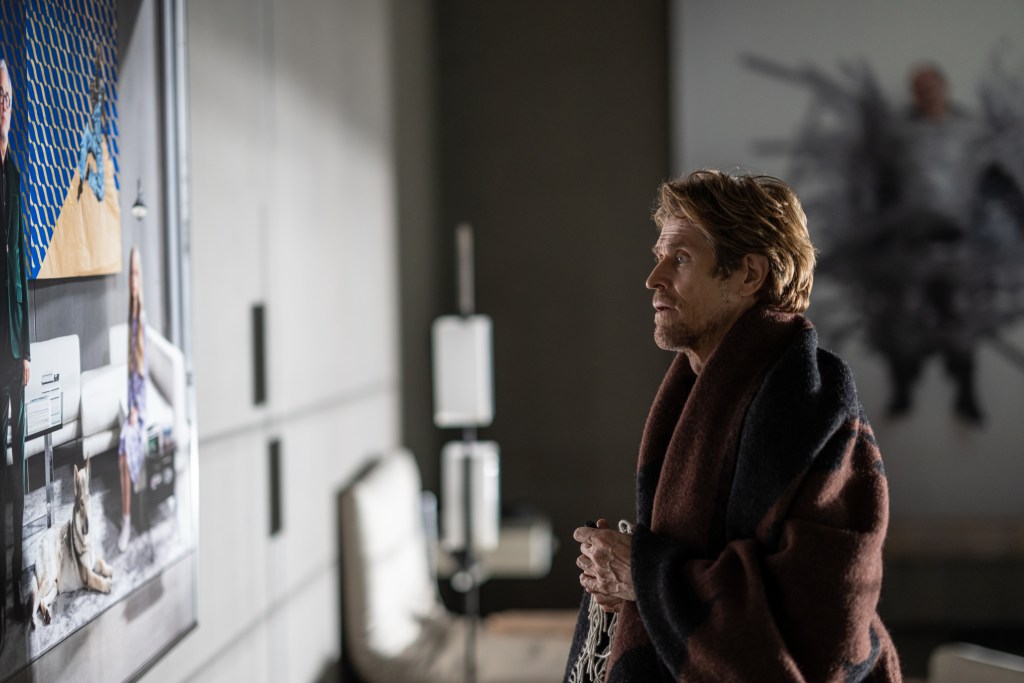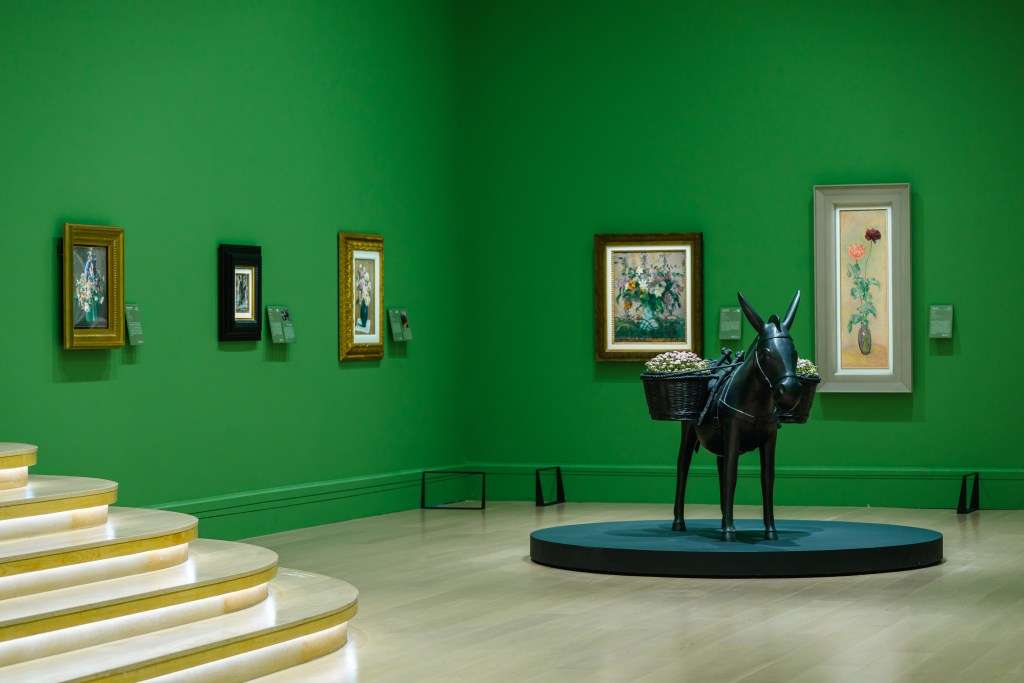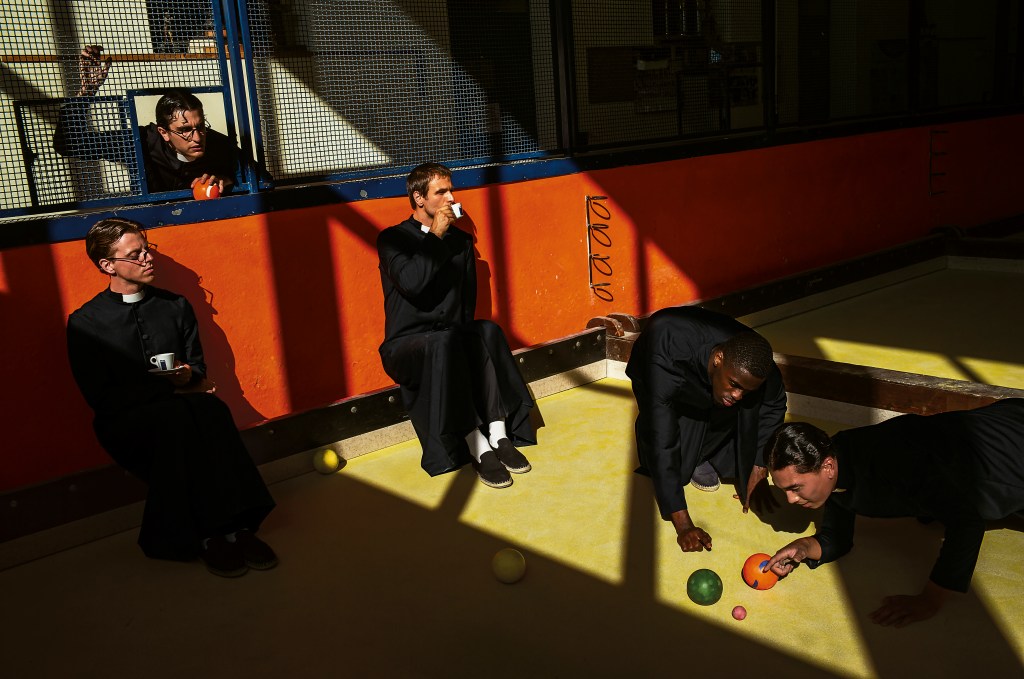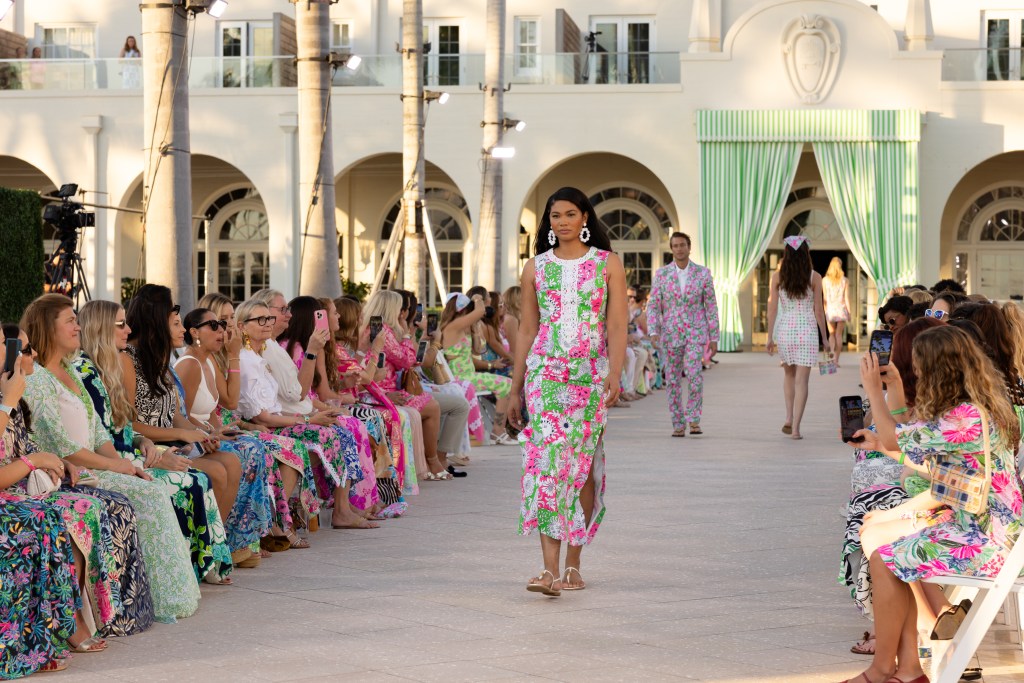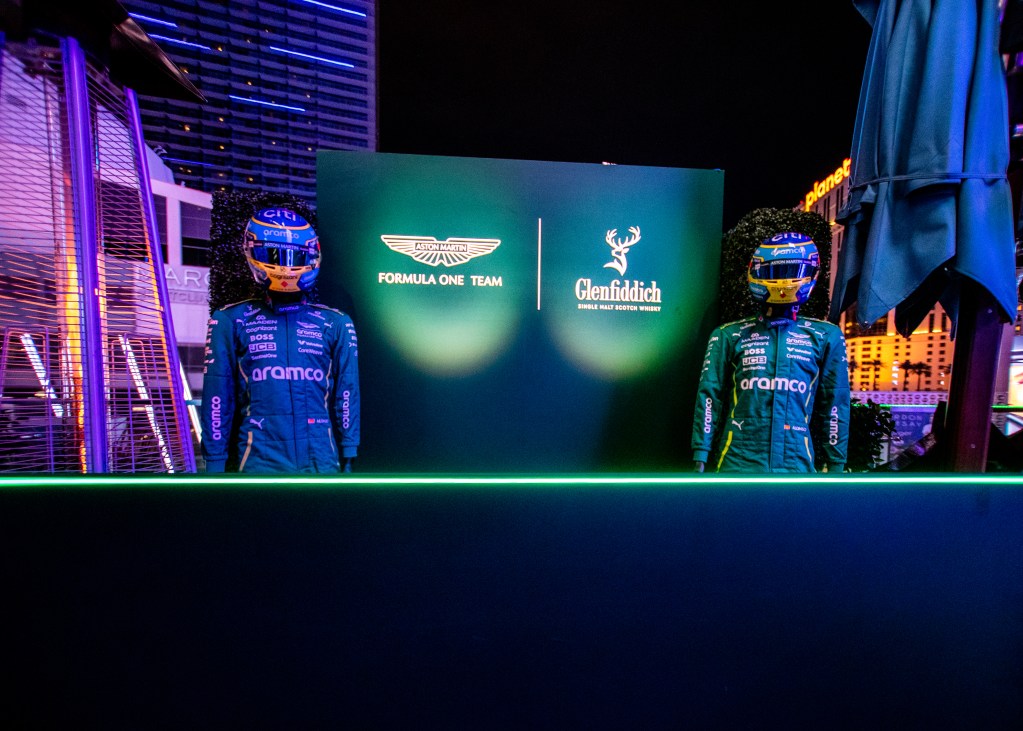Interview: Gary Taxali
The multi-media artist discusses balancing commercial and personal work and the perils of a blank white page

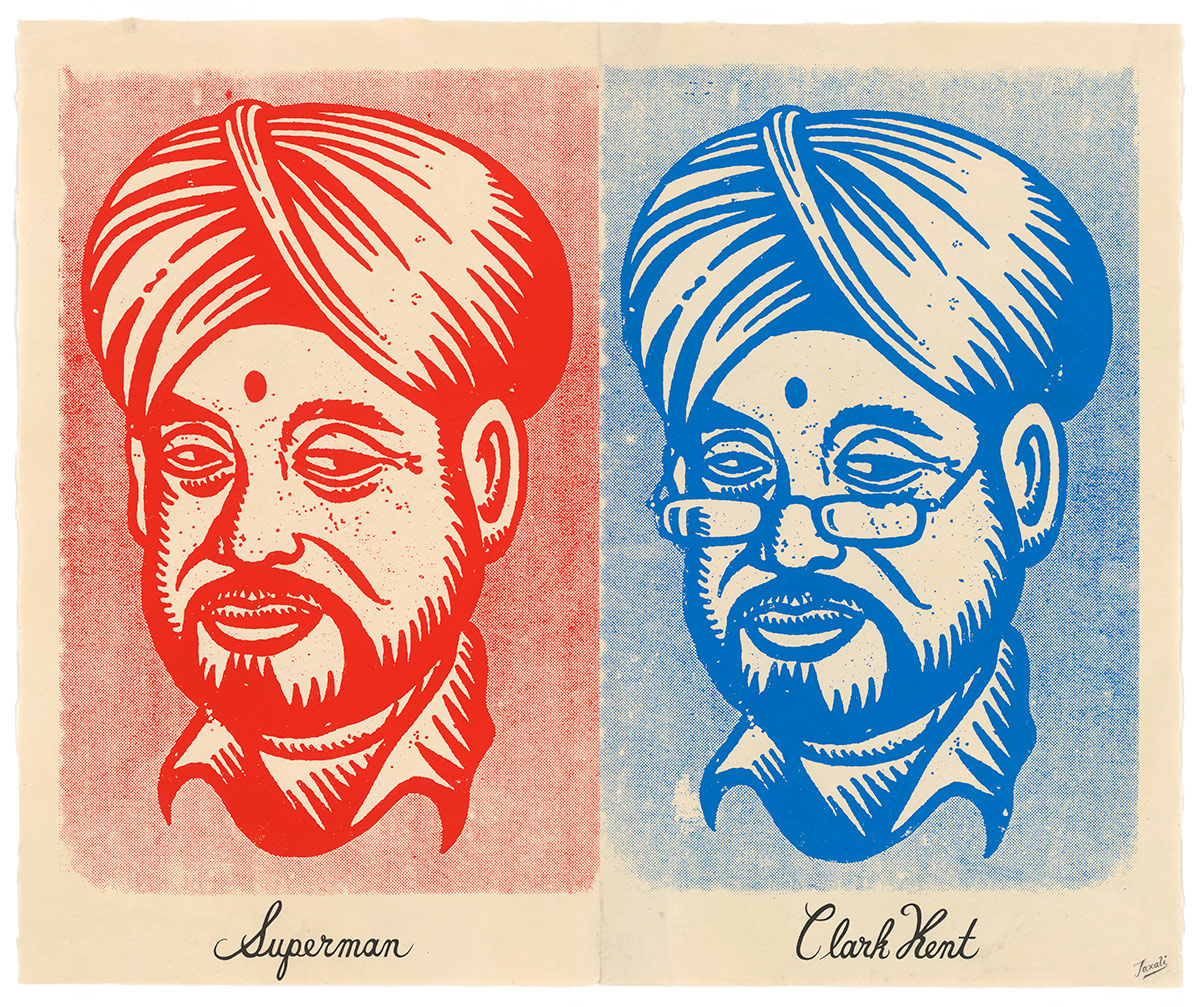
Art and commerce are traditionally thought of as opposing forces. Of course, this is especially true for artists who’s work lands on both advertisements and gallery walls. Finding inspiration from commercial work while maintaining a sense of integrity in the art world is no easy task, but Toronto-based artist Gary Taxali proves it’s not only possible but, at times, beneficial. Taxali is set to open his highly anticipated solo show this Saturday 22 February in NYC at Chelsea’s Jonathan LeVine Gallery.
“Unforget Me” features 25 new works by the award-winning multi-media artist, all of which showcase his cartoon-noir style that draws on discarded book covers and advertisement illustrations from a bygone era. We caught up with Taxali as he wrapped up the finishing touches on the collection from his Toronto studio. Delving into his signature process, the benefits of working with the right art directors for clients like Cinelli, GQ and Converse and his unexpected role in Canada Post’s stamp collection, the artist does not shy away from taking chances and working with the consequences. Just don’t put a blank piece of paper in front of him.

How did you get your start?
I went to art school here in Toronto and a year after that I went to NYC. I lived there for a year and from there I started doing a bit of personal work and started working for a lot of national magazines. That’s where I got my start in the commercial world.
Is this where you developed your unique style?
It was during school for sure where it sort of developed. I was doing a lot of similar work and I was doing a lot of illustration. I would just grab random things and start trying different techniques—not even techniques, more experimenting. I would ask myself, “What would it be like to screen print on steel? What would it be like to paint on a wood panel instead of canvas?” That sort of thing. I felt limited by purely illustrative work, so I started collaging my own [commercial] work out of magazines. Mostly, I was just not happy with where my work was going at the time [laughs], so I was just playing with materials and goofing around, seeing what works. From there it sort of evolved into my style.

Your new collection “Unforget Me” is a continuation of this evolution.
“Unforget Me” comprises 25 new pieces, which explore some of the same themes I tend to deal with a lot in my work: human dynamics, relationships and angst. For example, there are conversations between characters that are interrupted with panels. I’ll have a right and a left thing going on between characters—even five or six panels. But with this show there’s maybe a bit more of a slant toward relationships and lost love, that feeling of despair. I’ve got some mixed media pieces in the show and some paintings, screen prints on a panel with mixed media. I also have my biggest piece I’ve ever done to date—it’s 80” by 90”. The collection is a combination of everything I do. I try to make it feel like a self portrait, so it feels a bit natural.
You sit on the Stamp Advisory Committee for Canada Post. What’s that like?
It’s completely awesome. I created six collector coins for the Royal Canadian Mint, which led to joining the stamp committee. We meet three times a year in Ottawa, and it’s really a huge honor. We’re impartial, we’re not employees, but we do shape the art direction of the stamps. It’s pretty surreal when I walk into the post office and see stamps that I’ve influenced. I didn’t really know much about “stamp culture,” like collecting and the whole culture around it, but now I really enjoy it.

Your work contains so many layers. Can you tell me a bit about your creative process?
I have a couple of different rules when I work. One of them is that I don’t really like to work on anything white—like a blank canvas or a fresh piece of paper. I think it’s very scary and intimidating. I might do a drawing on a little piece of paper—a scrap paper from my studio—then I’ll think of where it’s going to end up. I might pick up a wood panel or an aged piece of paper and I think of that as most of the picture being already done, and then I think of the character or drawing as finishing it. After that I might then add a word. I work in a reductive way; it’s kind of a safety net [laughs], like, “Oh it’s already kind of done, I’ll just add a few things here and there.” It’s intimidating otherwise.
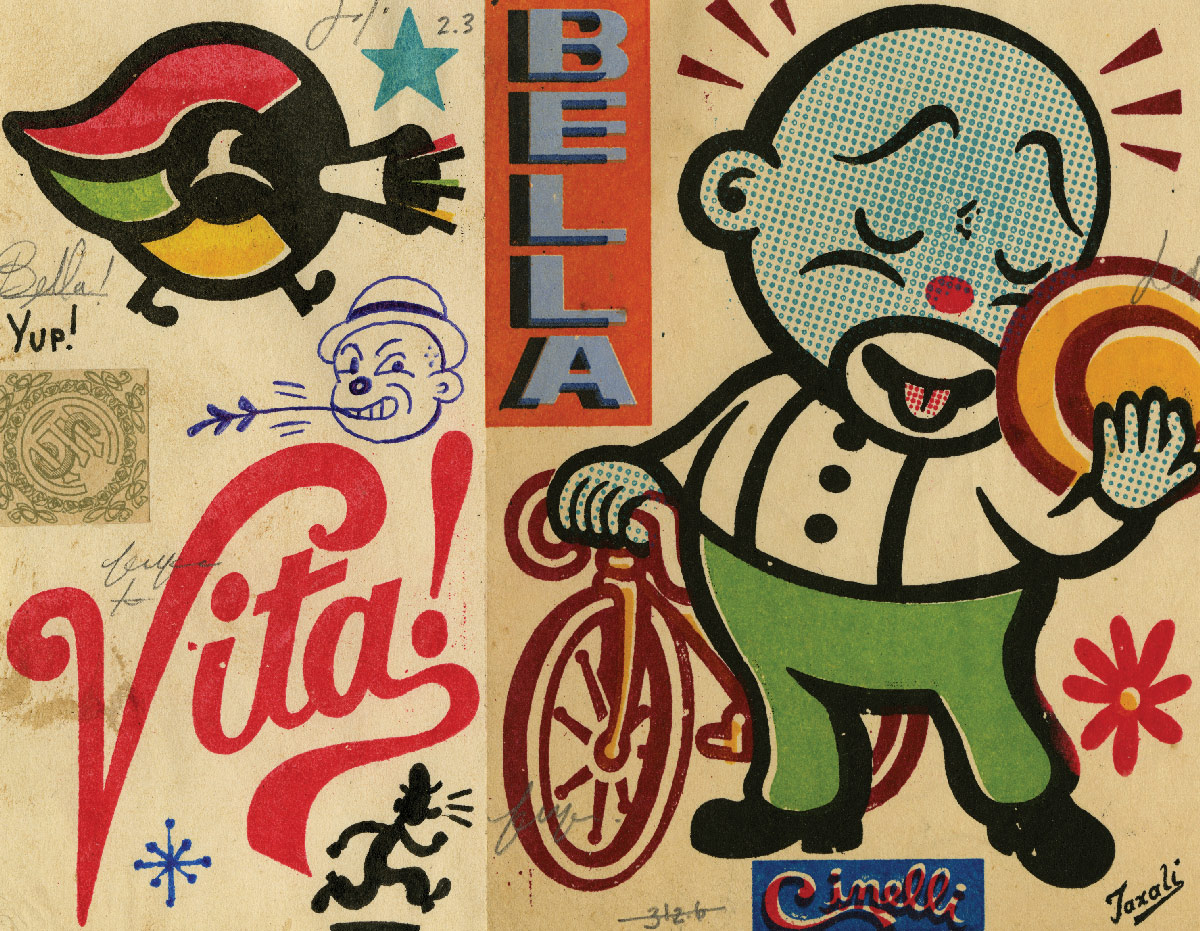
Second, I don’t draw with pencils. I like to stay committed to the mark that I make, so I’m in it from there on; I have to kind of make it happen. If I think it’s going into a weird place, I just let it be. You might have no idea where it came from, it’s 90% control with a good 10% lack of control. When I’m working on a book cover or a piece of paper, it really varies, the amount of “mistakes” that shape the piece. Maybe I’ll need something else to tie the whole thing together, so I’ll grab a piece of paper and start screen printing. But painting has way more control. I still kind of try to retain that feeling of going with the mark. When I do start a large painting, I’ll go in with the brush with that mentality. There’s an inherent safety in painting because I can always paint over it, but you need that because it’s such a large undertaking.
Finally, I like to work on a few things at a time. I don’t stay married to what I’m working on, or treat it too preciously. I might throw a piece across the room, set a mug on it. That stain from the mug or scuff from the floor usually pulls the piece in a new direction, or brings something together. I try to see each piece, whether big or small, as part of my larger process.

Are you influenced directly by advertising of the past?
Looking at my work, it’s easy to see the obvious references. From the ’30s, the Fleischer brothers and EC Seiner; the typography and advertising posters from the era. In so far as artists, the person that really influenced me is Andy Warhol. I do things differently than he did, but I really like a lot of the things he said about pop art and mass consumption and screen printing. I like the work of a lot of my peers who are artists working today: Roman Klonek, I think he’s fantastic. Jim Houser, Richard Coleman, it’s nice to discover new artists. I’m big on the Russian avant-garde style, with the two to three color printing process. I like that stuff, too. Finally the one guy that I felt handed me a golden ticket about being ok with working small—on very small “canvases”— and doing collages is Ray Johnson. Ray’s an artist that I think has not received the credibility he deserved in his life.
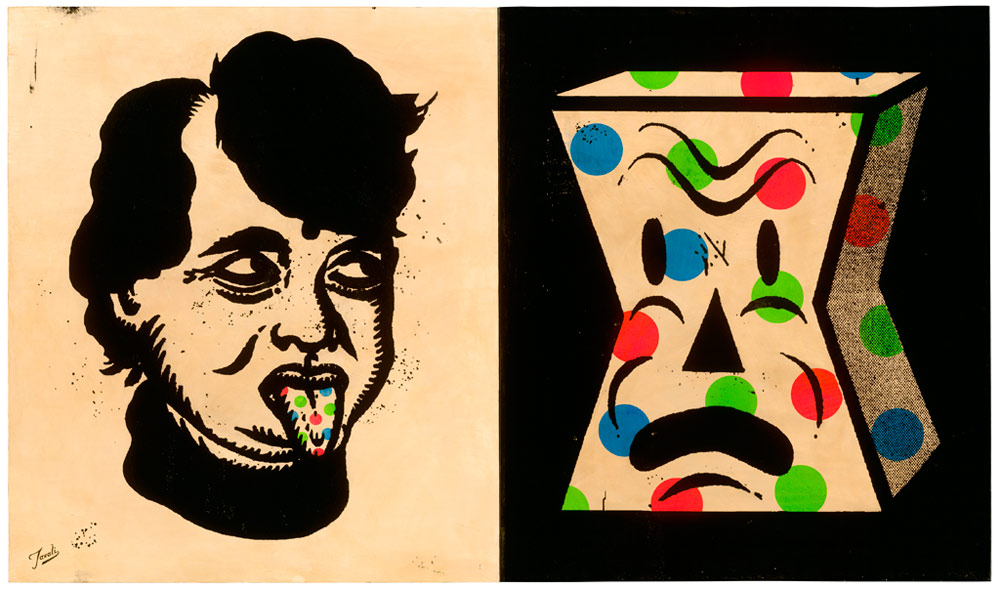
Do you find crossover between your commercial and gallery work?
Definitely, there’s major crossover in both directions. Certain clients will want something very personal—with the same or similar feel to my gallery work—and a lot of times even collectors will reference something I’ve done for a commercial client. A lot of it tends to really blur, which I kind of like. I did that by design. I was always confused by the artist who had two things going on that were vastly different. I think you can tell the difference between each body of work, but each has made me appreciate the other a lot more. I never felt like I had to lose who I am.
There has to be an element of play and fun in the commercial world, and I’m fortunate that the art directors I work with get me. The ideas are an extension of my work; I don’t do other people’s ideas. They’ll want my take on something and I’ll think, “Oh man, they called the right person!” [Laughs] I just finished an illustration for Entertainment Weekly for the Oscars and it came so naturally because it allowed me to do something that speaks to my personal work.
It’s so easy artistically to bend away from your own style when you’re doing commercial work. It’s easy to rationalize it, this idea that you’re just making a mark on a piece of paper. I’m glad I said no to that feeling. People can see through it, the whole style thing. Everyone’s got something that’s important to them. I think having the confidence that comes from my commercial client base has really fed into the fine art work. Things are so much different than they used to be. In the past, there was such a divide. The people who do street art for example, have paved the way for valid recognition of different forms in different settings.
In the high-brow art world, in the past if it looked like something it was bad. Everyone wanted abstraction. So I feel lucky that my work has a place here and in the commercial world. Previously, the sort of artwork I love and work in was just seen as communication [laughs]. A lot of people will have a nostalgic response to it. They’ll think, “I know I haven’t seen it because it’s new, it’s your original work, but it’s familiar.” I want things to be sort of hidden but friendly, sort of a wave of hello beneath the layers.
Gary Taxali’s “Unforget Me” opens Saturday 22 February 2014 at NYC’s Jonathan LeVine Gallery.
Images courtesy of Gary Taxali
